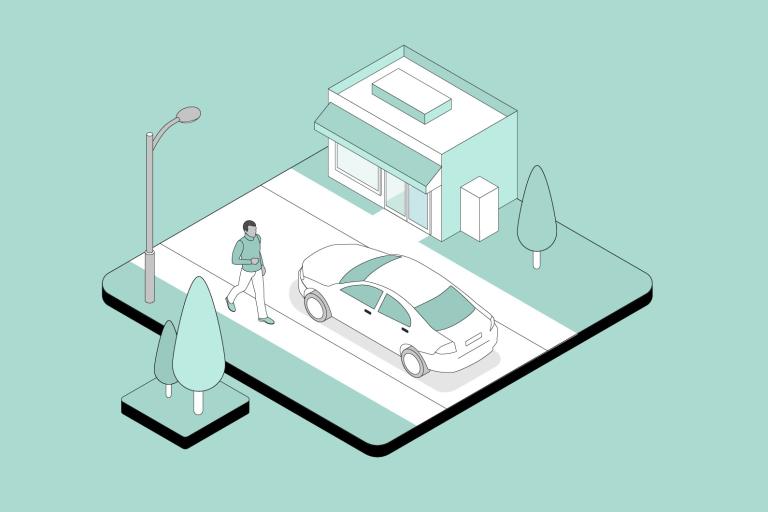About side road crossings
Side road crossing treatments are designed to minimise conflicts between pedestrians, cyclists, and motor vehicles. The treatments ensure that pedestrians maintain their legal priority over vehicles turning into or out of a minor road.
Safety, convenience and accessibility need to be considered when designing a side road crossing. At the same time, active travel routes should be continuous and consistent for pedestrians, wheelchair users and cyclists. This includes at side road crossings.
Entry treatments
Entry treatments are designed to minimise conflict at side roads and priority junctions.
Side road treatments
Measures to reduce vehicles movements through a junction include turning or access restrictions. Physical measures, including raised entry treatments or tightened corner radii, aim to reduce the speed of turning vehicles while reinforcing pedestrian priority.
Interventions may include measures to reduce the number of vehicles moving through the junction, road markings to show priority or infrastructural measures to slow vehicles at conflict points.
The design of side road treatments should respond to the specific context and guided by:
- vehicle count data
- active travel usage
- network planning
- the local streetscape
Continuous footways
Continuous footways are a form of entry treatments where the street is raised to footway level across the mouths of side roads to allow people to cross on one level. Surface material should be used to represent the continuity of the footway and distinguish the raised section from the rest of the carriageway. Alternatively, raised tables across the mouth of side roads can reduce the speed of vehicles turning in and out of the junction. This improves safety for cyclists and can help pedestrians.
Where traffic volume is higher, marked priority can be used using give way lines to assign legal priority to cyclists over turning vehicles. These may be in line or set back from the major arm depending on traffic volumes.
Where traffic volumes on the side road are higher, a controlled crossing such as a parallel zebra crossing provides a demand responsive solution. This can minimise conflict and delay to active travel movements and improves motor vehicle compliance in giving way to pedestrians and cyclists.
For pedestrians, desire lines should be kept as straight as possible. Small corner radii minimise the need for pedestrians to have to change from their desire line.
Accessibility at side road crossings
Crossings need to be accessible for wheelchair users. Ideally, there should be no potential for interaction with cyclists.
If there are different levels between the pavement and the street, well-designed dropped kerbs with the appropriate tactile paving should be provided at all side-road junction.
Dropped kerbs should not be placed on curved sections of kerbing because this makes it difficult for blind or partially sighted people to orientate themselves before crossing.
At the same time, pedestrians and wheelchair users should not have to make lengthy detours to use dropped kerbs to cross the road.
When designing a side road crossing, the use of materials and street furniture can add to street character and sense of place. Well-designed active travel routes with good sightlines, including crossings, are an essential part of attractive spaces and active places. Crossings are chosen and designed in a way that encourages people to use them.




